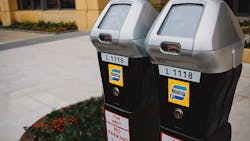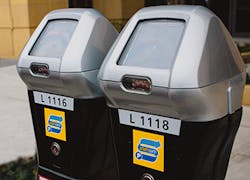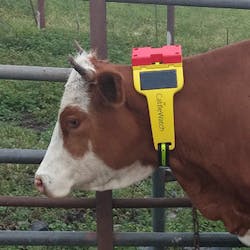Demand for wireless devices is a growing market due to the rise of Industrial Internet of Things (IIoT). An example of IIoT technology using rechargeable Li-Ion batteries is the IPS Group Inc., which develops wireless parking meters that use a built-in solar panel in combination with an industrial-grade rechargeable LI-ion battery to store the harvested energy. Another company, CattleWatch, utilizes solar-powered “smart collars” to create a wireless mesh network that enables ranchers to manage their herds remotely.
Here’s how each works:
IPS Group
- Developed a solar-powered parking meter.
- Miniaturized photovoltaic panels gather solar energy.
- Energy stored in the industrial grade rechargeable Li-ion battery.
- Delivers both the required capacity and the high pulse capabilities to initiate two-way wireless communications.
- Provides the parking meters with constant reliability with a 20-year battery life serving to minimize long-term maintenance costs.
- Autonomous meters can establish a mesh network to interconnect devices.
- Functions as a multiple payment system option, access to real-time data, integration to vehicle-detection sensors, user guidance, and enforcement modules, and connections to a comprehensive Web-based management system.
CattleWatch
- Places solar-powered “smart collar” units on cattle.
- Collars communicate with the hub collars via a wireless mesh network, and the hub collars communicate to the internet cloud via Iridium satellites.
- Provides ranchers with remote access to real-time data regarding daily animal behavior, including herd location, walking time, grazing time, resting time, water consumption, in-heat condition, other health events, and instant notification if potential threats arise from predatory animals or poachers.
- Energy harvested gets stored in industrial-grade Li-ion rechargeable batteries, providing sufficient energy to continuously monitor the herd, with extended battery life serving to reduce the total cost of ownership by eliminating the need for multiple battery change-outs over the expected service life of the device.
- Industrial grade Li-ion batteries were chosen due to being small, lightweight, and more comfortable for the animals to wear.
About the Author
Sign up for our eNewsletters
Get the latest news and updates


